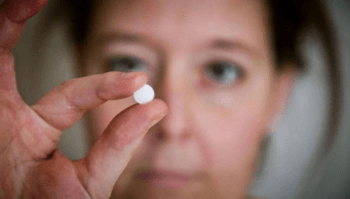Curbing Opioid Abuse

Most people know that heroin is a dangerous drug, but its cousins, the legal, pharmaceutical opioids, such as codeine or hydrocodone, must be safe, right?
Not so fast.
Opioids—which include the illegal drug heroin as well as prescription medications, including hydrocodone (such as Vicodin), oxycodone (such as OxyContin and Percocet), morphine and codeine—can be dangerous, even deadly, at high doses.
“Opioid abuse is growing exponentially,” said Alva O. Ferdinand, Dr.PH, J.D., assistant professor at the Texas A&M Health Science Center School of Public Health. Rates of overdoses and deaths attributable to opioid abuse are alarming lawmakers and health care providers at all levels of government and health care.
“The problem is particularly severe in rural regions of the United States, where, paradoxically, there may be fewer health care providers but a higher prevalence of opioid users, especially among vulnerable and high-risk groups such as pregnant women and teens,” said Jane N. Bolin, R.N., J.D., Ph.D., professor at the School of Public Health and director of the Texas A&M Southwest Rural Health Research Center, which has made the rural opioid epidemic one of its most important research priorities.
Between 2000 and 2014, the rate of overdose deaths involving opioids (both opioid pain relievers and heroin) increased 200 percent, resulting in the deaths of 28,647 Americans, according to the U.S. Centers for Disease Control and Prevention (CDC), with a 14 percent increase from 2013 to 2014 alone. Worldwide, it is estimated that the yearly death toll from opioids is 69,000. Deaths from prescription painkillers alone quadrupled since 1999, killing more than 16,000 people in the United States in 2013.
Taken as prescribed, opioids can be used to manage pain safely and effectively by reducing the intensity of pain signals reaching the brain. Still, people on high daily doses of opioid pain relievers—even those legitimately prescribed—are at a higher risk of overdose. “In the last couple of years, four studies have found that as the dose of opioids is increased, the risk of overdose also increases,” Ferdinand said. “It is important to note that these studies were based on actual prescriptions and legitimate therapeutic use of these drugs.” Even a single large dose can cause severe respiratory depression and death.
Continue reading on Vital Record.
This article by Christina Sumners originally appeared in Vital Record.





